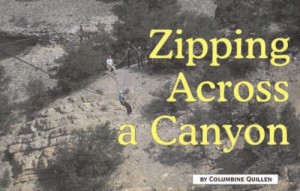Review by Martha Quillen
Wildlife – September 2006 – Colorado Central Magazine
Living With Bears – A Practical Guide to Bear Country
by Linda Masterson
Published 2006 by PixyJack Press
ISBN 0-9773724-0-5
LIVING WITH BEARS, A Practical Guide to Bear Country, is just what the title says it is. Well, okay, maybe it’s not always practical. Author Linda Masterson wants to give bears every chance, and like most bear advisors these days, that means she tries to convince people that they should discourage bears from hanging out with them.
Thus the book includes the usual: Don’t feed bears. Don’t leave out garbage or birdfeeders or barbecue grills or pet food. Make your home bear resistant with sturdy doors and screens and don’t store food in sheds or garages. Do get bear-proof trash receptacles.
But this book goes way past such basics. It tells you how to build an electrified, bear-discouraging fence. It tells you how to drive in bear country (very slowly). It advises you not to have fruit trees in bear country, but if you feel you must you should take off all of the fruit before it ripens, even at the top of the trees.
You shouldn’t grow clover. You shouldn’t allow animals to birth in the fields. You shouldn’t use air fresheners in your car or near open house windows. Don’t bury or burn garbage or trash. Don’t keep food in automobiles, and while your at it clean under the seats and make sure there are no edibles or lotions in the glove box, too. When you’re camping, be sure to keep the filters, fans, and exhaust ducts of campers clean so cooking smells won’t attract unwanted visitors.
The sheer amount of advice in this book is exhausting. In fact, it’s enough to make you want to move to Manhattan — even if you’ve never lived anywhere but bear country.
But Living With Bears has got some interesting stories, great pictures, fascinating facts, and funny observations, too.
If bear are a problem where you live, this book will give you several hundred ideas for dealing with them. But some of those ideas are a little strange. For example:
“This one comes from Lake Tahoe, where the bears apparently don’t know there are no rattlesnakes. Take a clean, empty can, add enough small pebbles or pennies to produce a rattling sound when the can is disturbed, and string the cans on wire about three feet off the ground, at bear shoulder height. When the bear passes under the wire the cans rattle — and rattle the bear.”
MY FAVORITE WEIRD ADVICE was in the section about the importance of making bears know they’re unwelcome in your home. If a bear gets in your house the author recommends throwing things and shouting and offers this advice from bear biologist Tom Beck: “I recommend keeping several baskets full of baseballs in strategic locations, they’re a lot easier to throw than rocks; not many people have rocks inside their house. Baseballs sting, but unless you’ve got a killer fast ball, you won’t do permanent damage to the bear. Hit up the local Little League for end-of-the-season deals on used baseballs.”
Now you know why this book comes with a warning that the author, publisher and consultants “assume no liability for accidents, injuries, or property damage caused by bears.”
If you’re looking for an un-put-downable book to read about bears, there are much better choices (such as Stephen Herrero’s Bear Attacks). But if you’re looking for advice on what to do if you have bears in your neighborhood, this book is surely what you need because it’s hard to imagine that Masterson left out an iota of advice.
Masterson clearly loves bears, and thus I suspect that a lot of readers will feel her suggestions go a bit too far. Next thing you know she’ll be expecting people to keep food out of their homes and bellies in order to be “goods guests in bear country.”
But if you heed a quarter of the advice in this book, you and the bears should both be safer and a lot more likely to live happily ever after, together.


